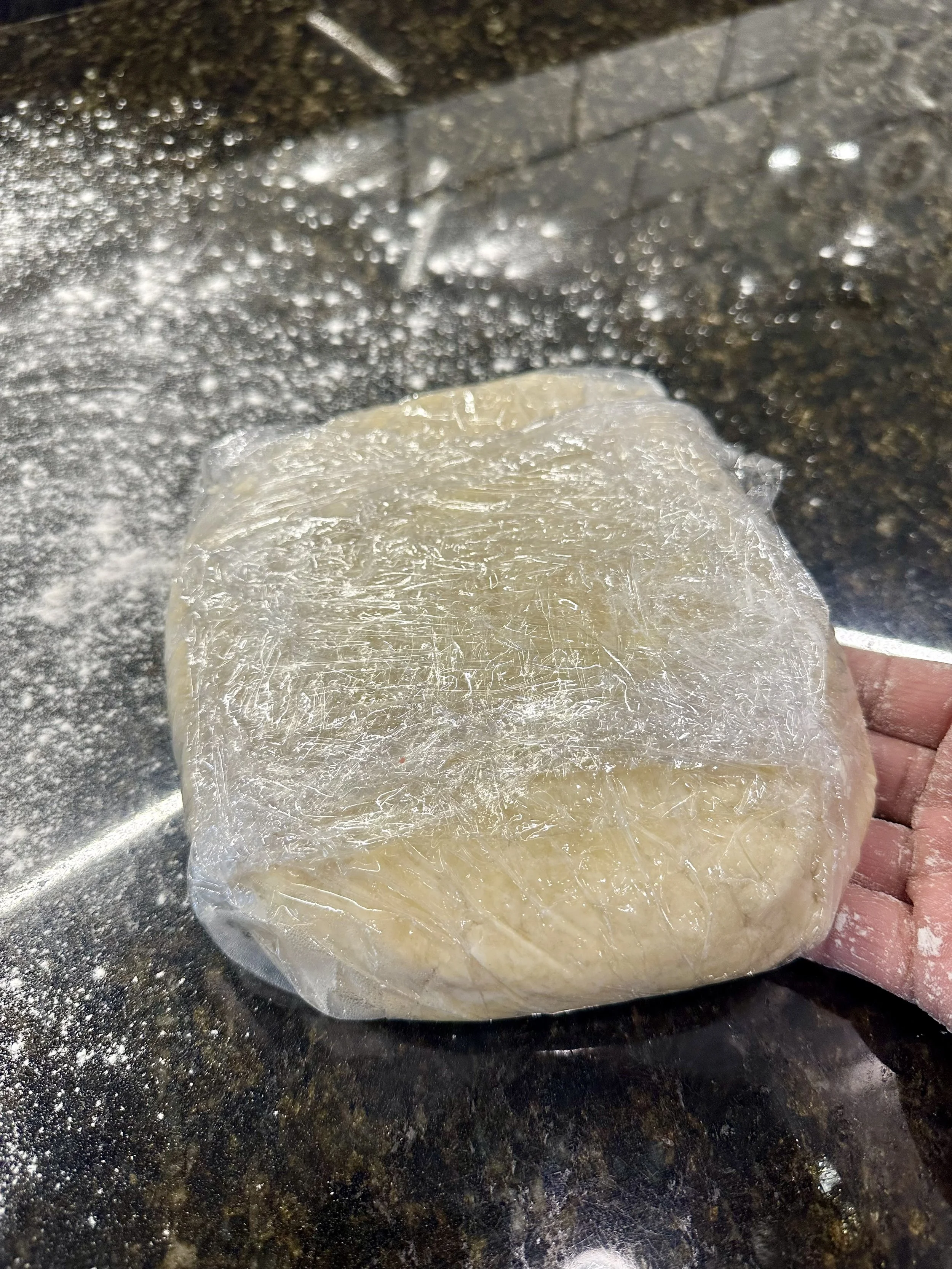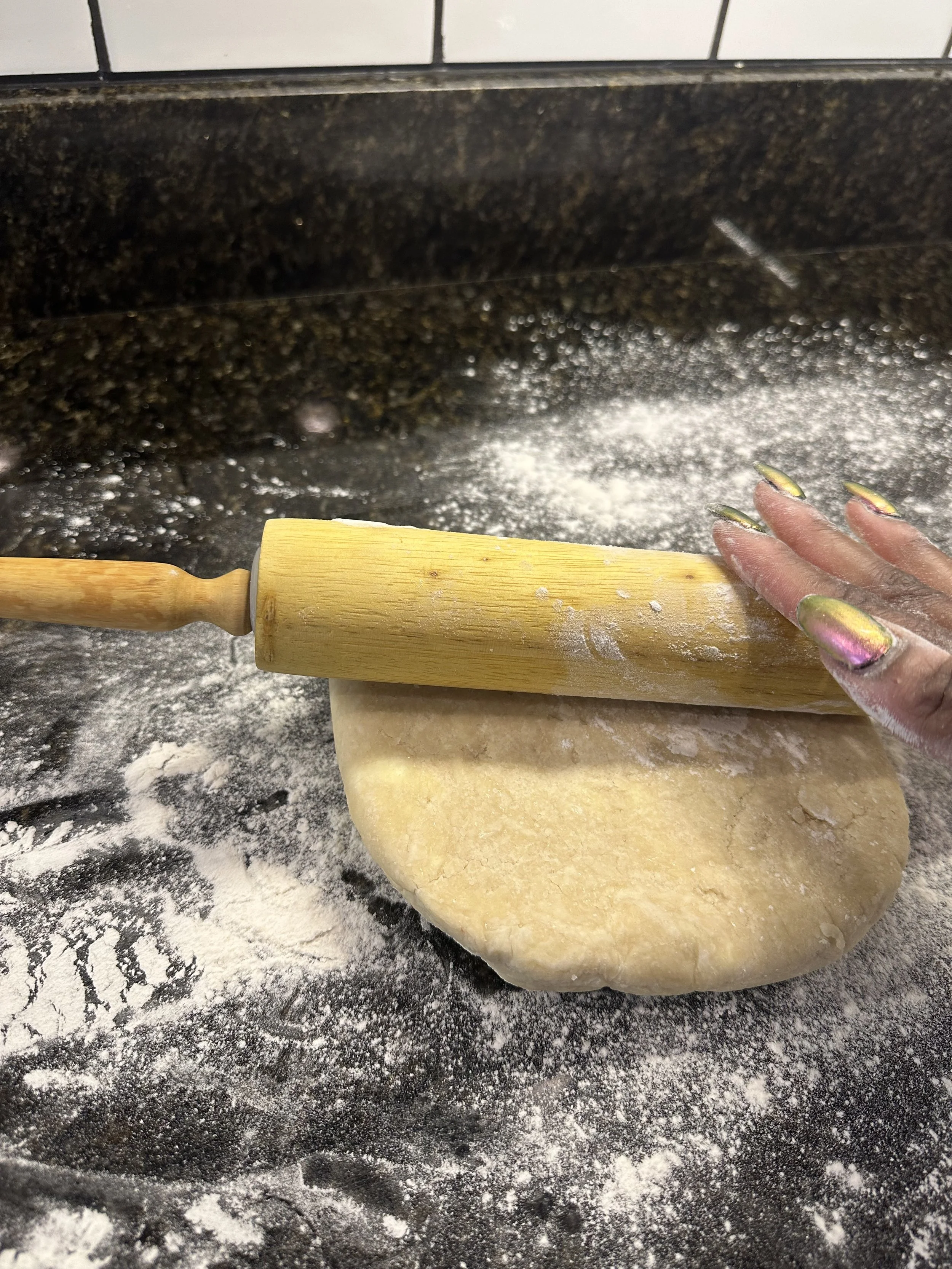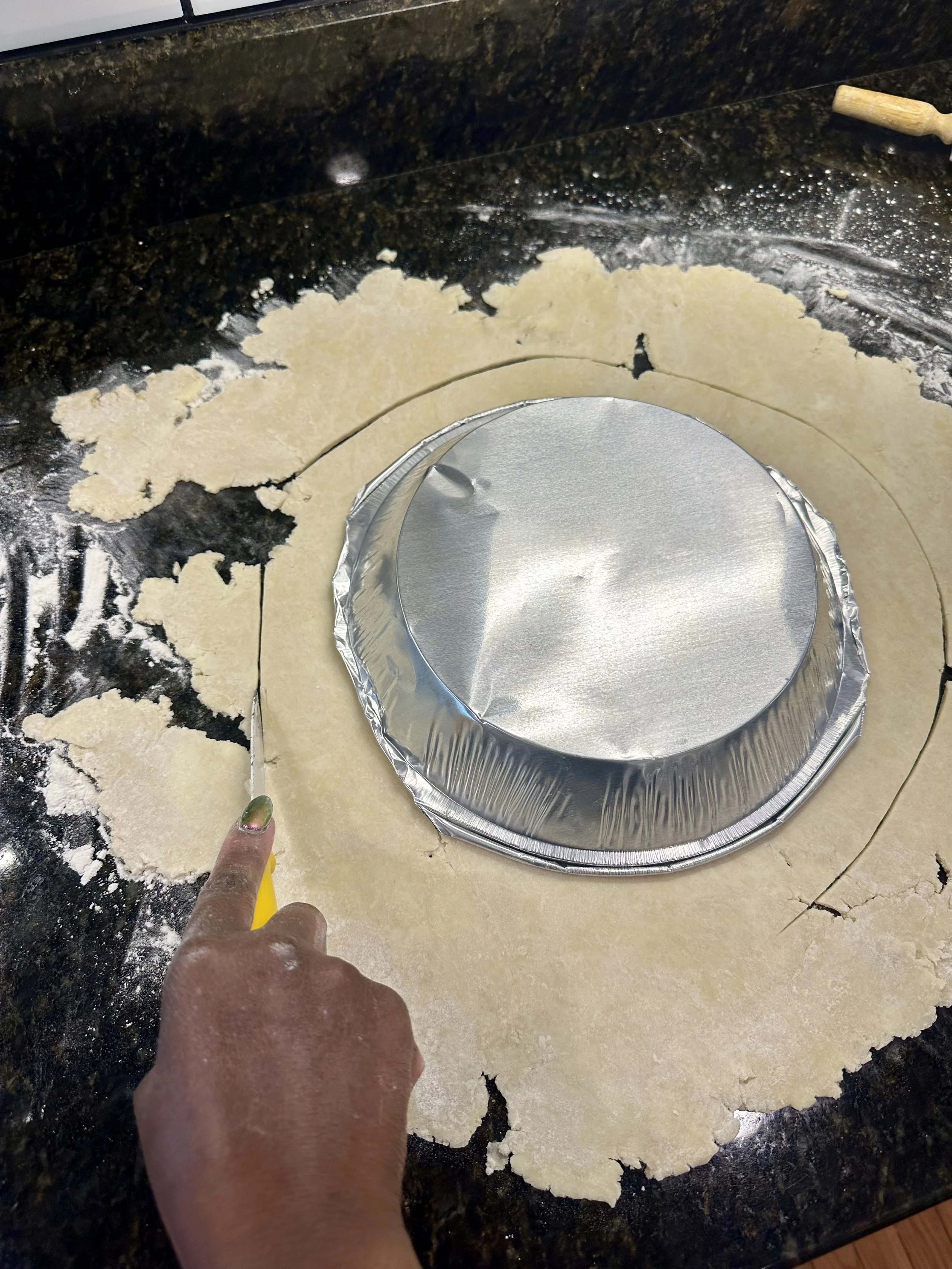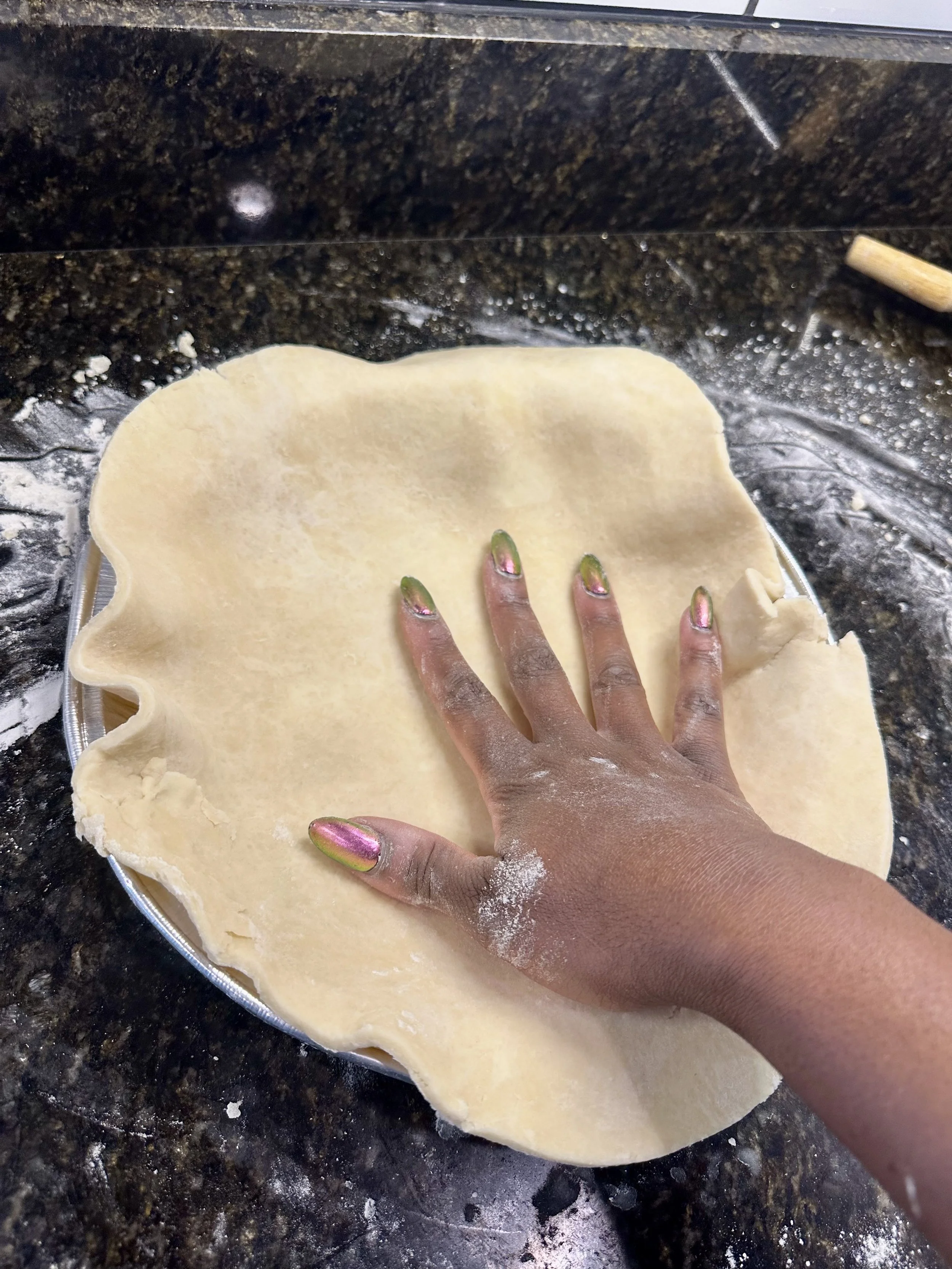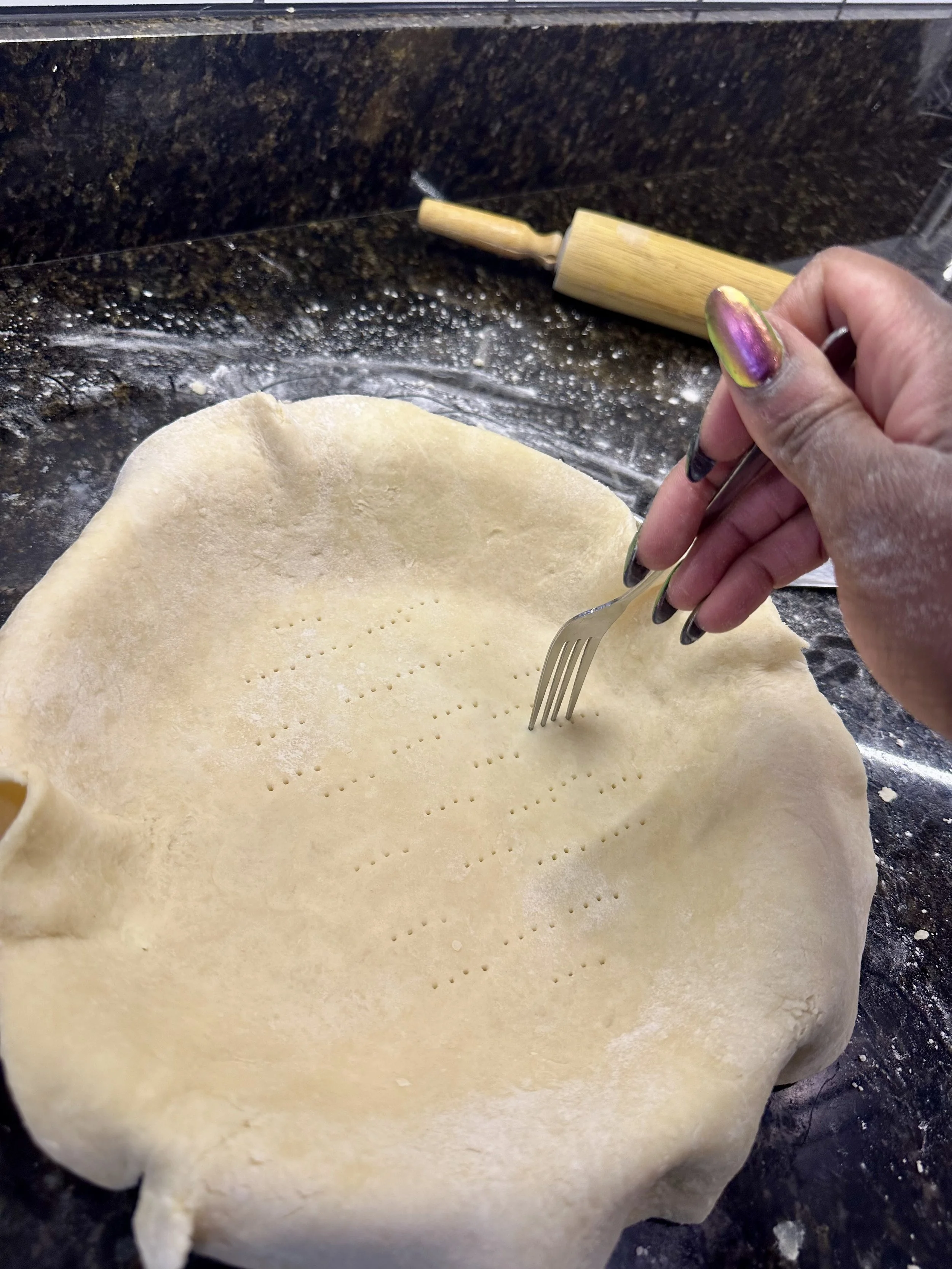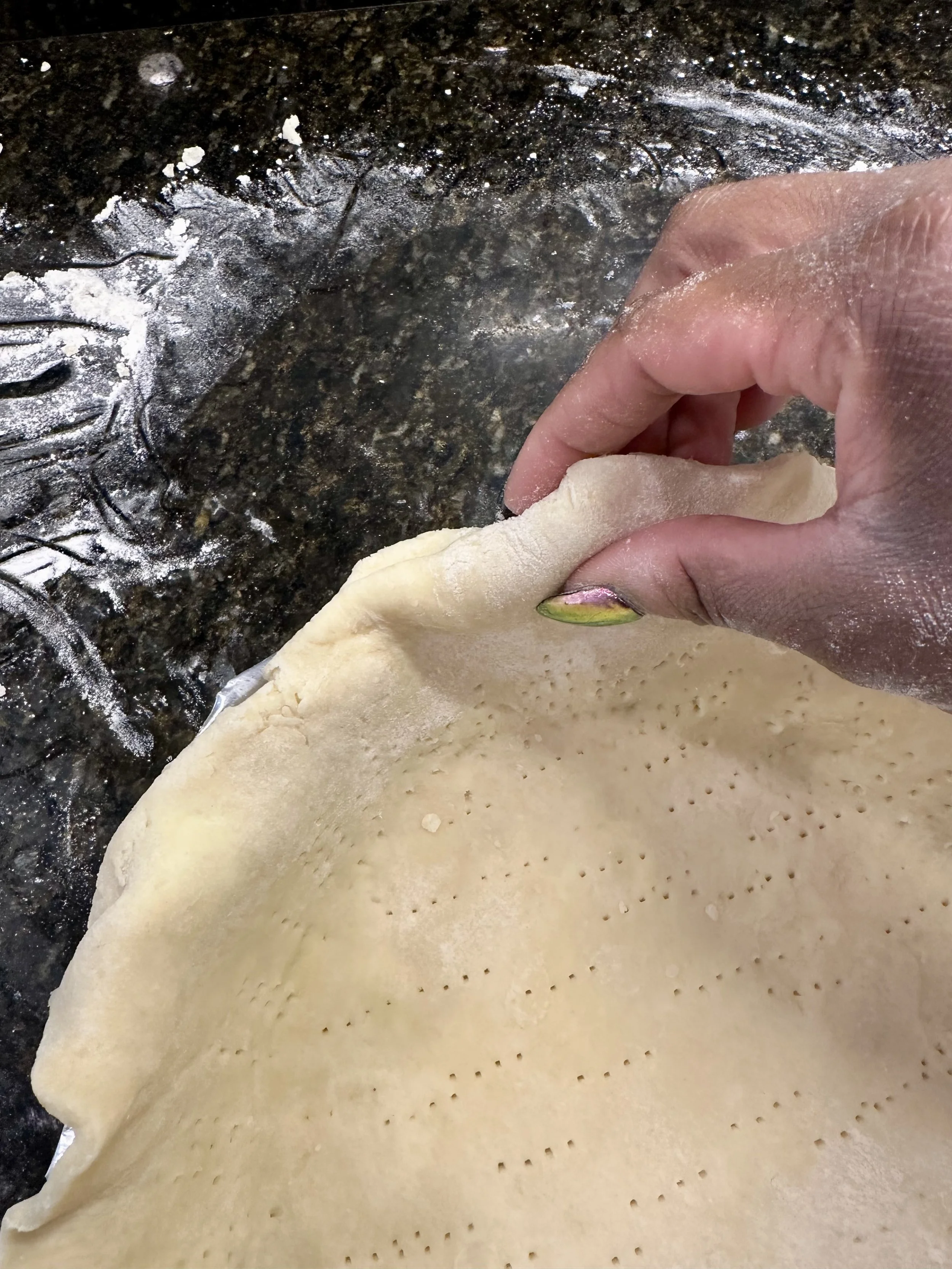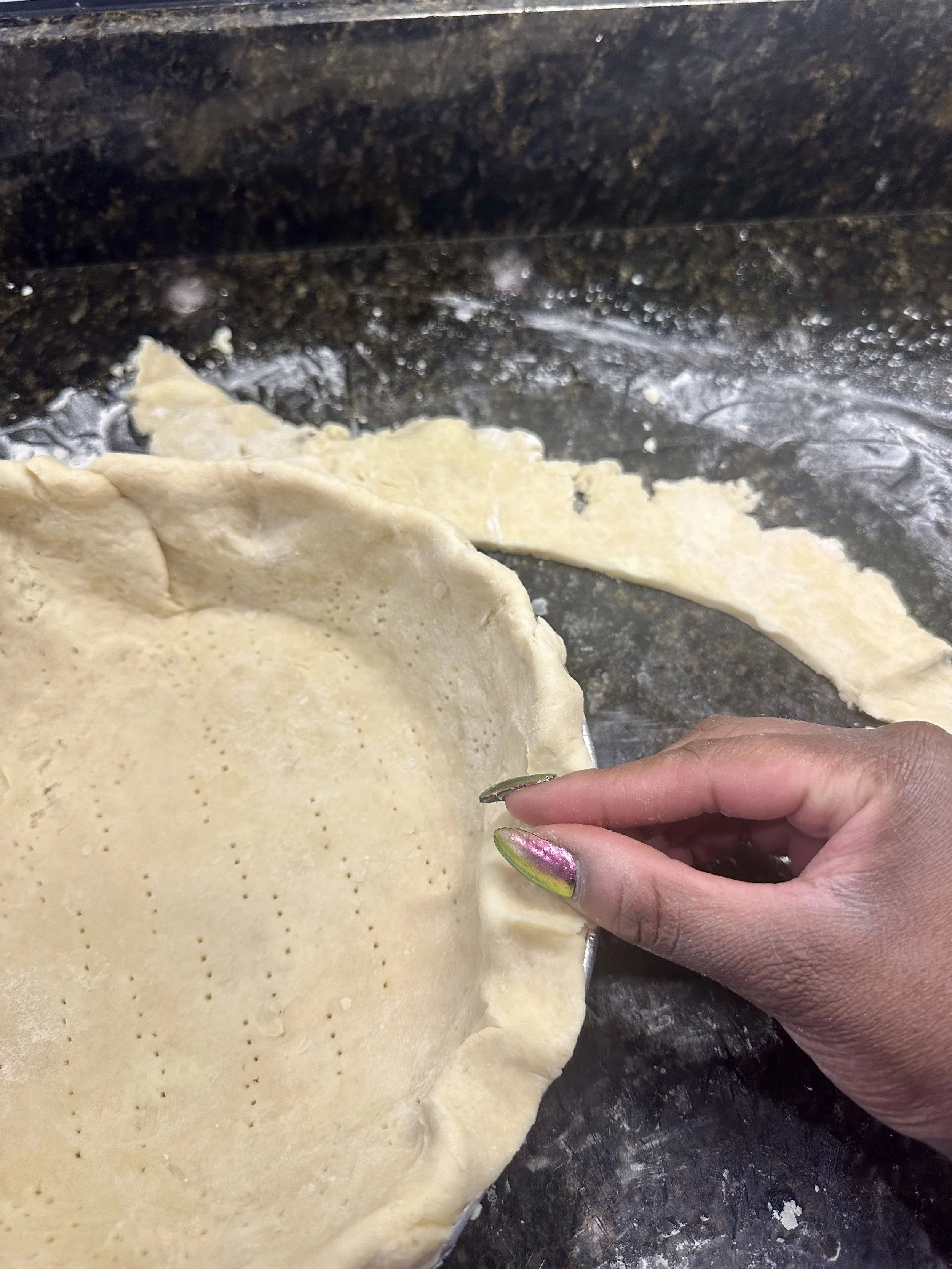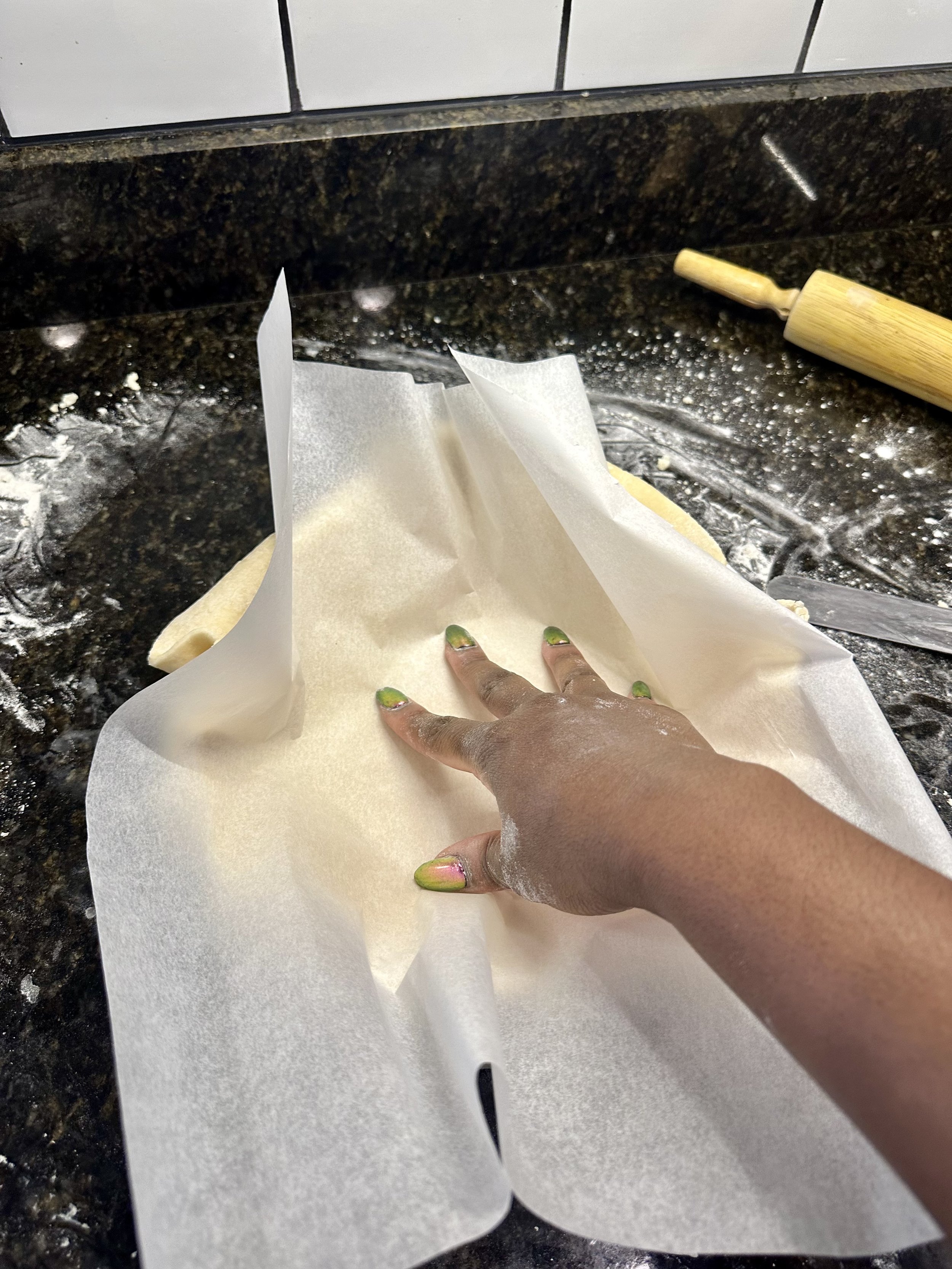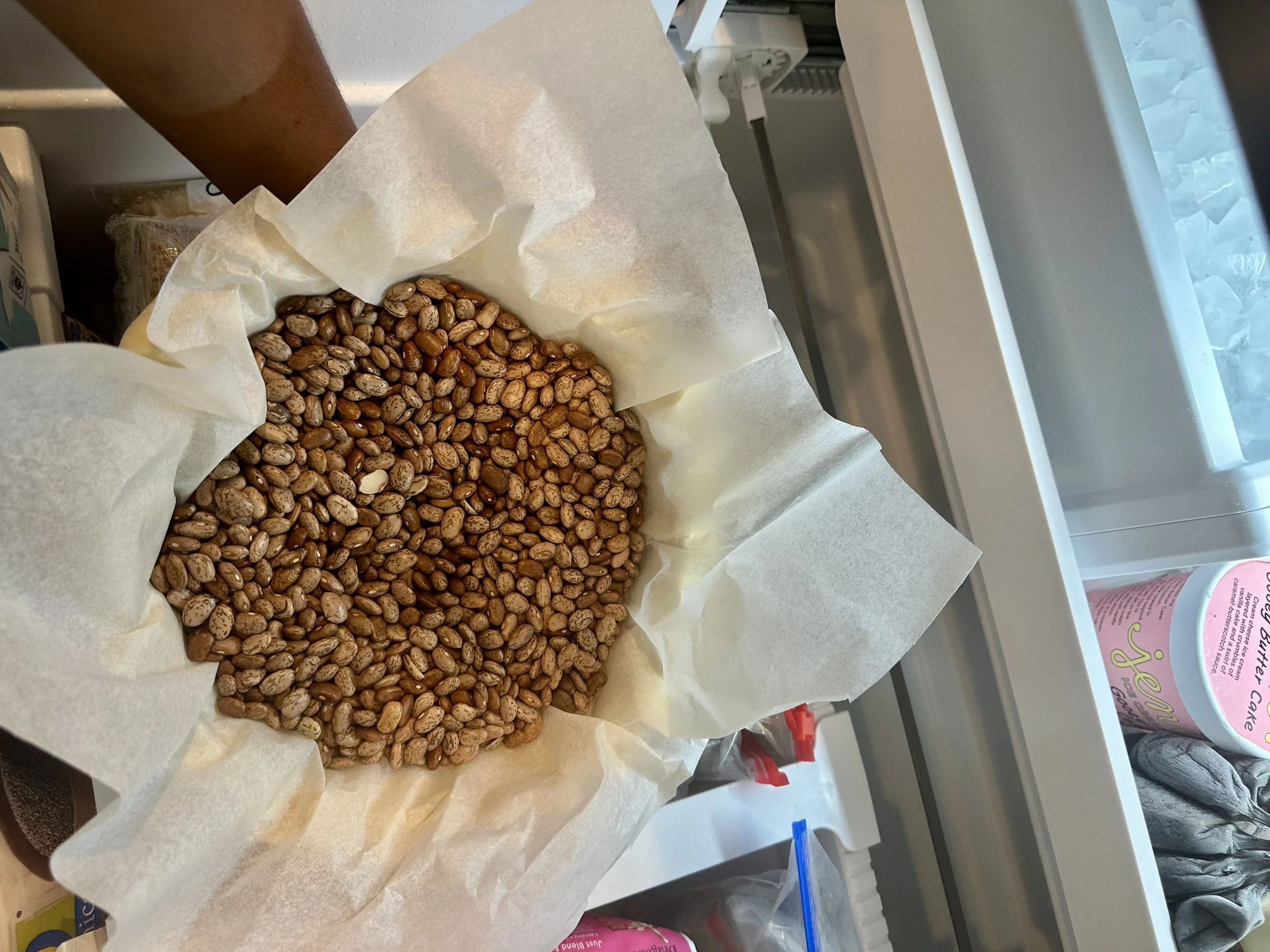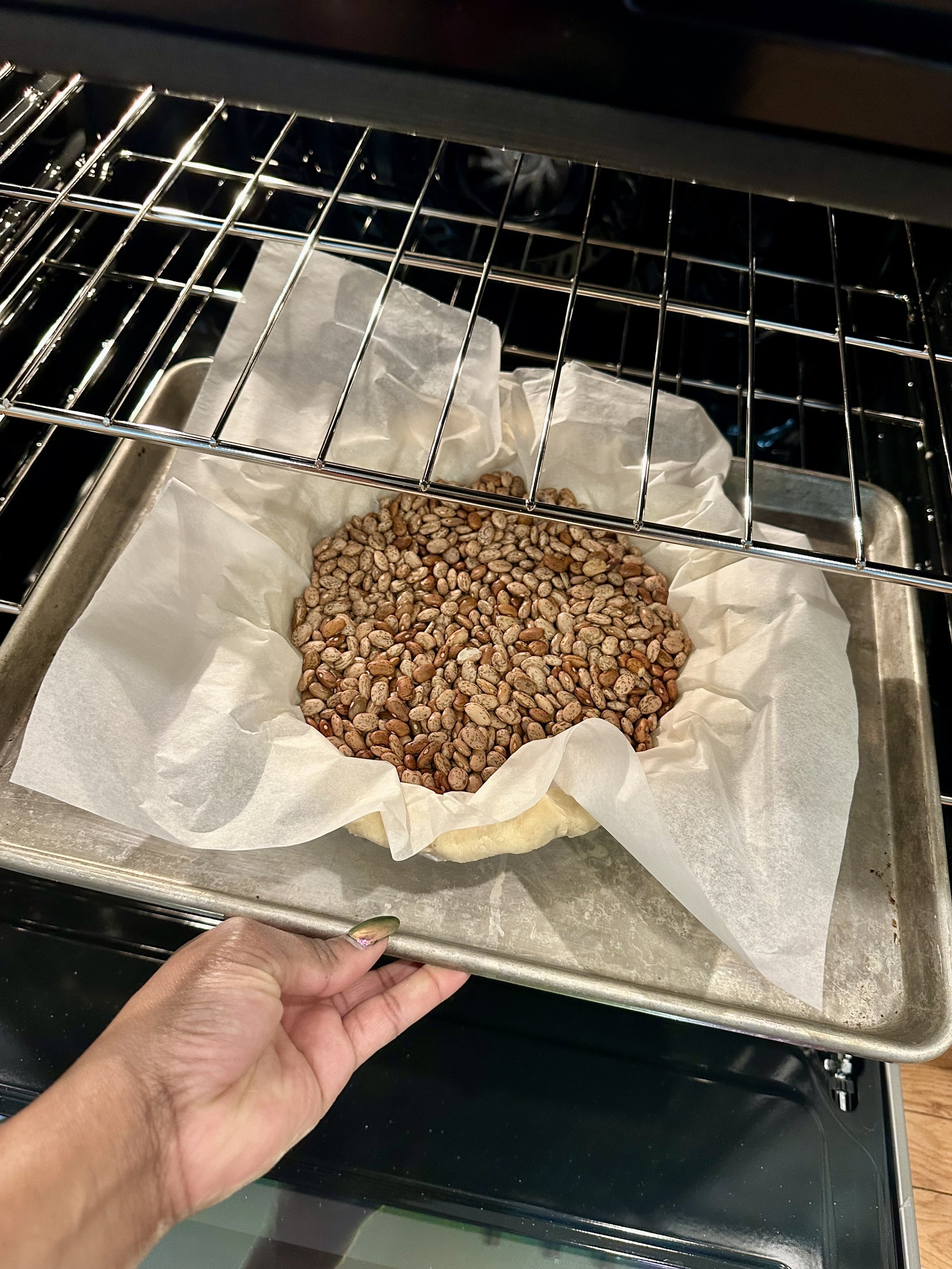PIE CRUST
Pie Crust
Perfect flaky tender pie crust every time!
Yield: 2 x 10-inch pie crusts
PREP IT!
3¾ cups Flour, all purpose
1½ teaspoon Salt
1½ teaspoon Sugar, granulated
3 sticks (1½ cups) Butter, salted, very cold! (you can store it in the freezer for 20 minutes before use), cut into ½ inch cubes. (for plant-based recipes use shortening instead)
9-12 tablespoons Vodka (Trust me! stored in the freezer for 20 minutes) or Ice water
MAKE IT!
In a large bowl, stir flour, salt, and sugar together to combine.
Work the butter in with a fork, pasty cutter, or your finger tips (preferably with gloves, so the warmth from you hands doesn’t melt the butter). Do this until the mixture resembles crumbled cookies mixed with breadcrumbs (Some larger chunks of butter will remain).
Slowly drizzle in the vodka or water, while stirring the mixture, until the mixture has a dough-like consistency.
Squeeze the mixture together into a dough ball and split it in half. Wrap each half in plastic wrap. Flatten each dough ball while in the plastic wrap into a circle to make rolling out easier. Refrigerate for at least 1 hour to allow the dough to set and the gluten to relax. At this point you can freeze the dough for future use or do the following to blind bake it for custard/cream/open faced fruit pies.
For Blind Baking:
On a lightly floured surface, roll out one dough ball at a time, using a rolling pin, wine bottle, or whatever you have that works, into a 1/8 inch thick round. Flip your pie pan over onto the rolled out crust and cut a circle 1-2 inches away from the edge of the pie pan. This is to ensure you have plenty of crust to work with.
Flip the pie pan back over and place the rolled out crust into the center of the pie pan allowing for it to fill the bottom and sides. The crust should spill over the edges.
Tuck the excess crust under itself to form a thick crust boarder around the pie pan edge. Crimp the pie as desired.
Using a fork, poke holes all along the bottom and sides of the crust.
Place a piece of parchment in the center of the pie crust, ensuring that it covers both the bottom, sides, and edges of the crust. Place pie weight, dry beans, or rice into the parchment paper to fill the cavity.
Place the entire crust with the weights in the freezer for 30 minutes to allow the crust shape to set and to allow any softened fat to resolidify.
Blind bake the entire pie crust with the weights in a 375F oven for 10-15 minutes for any pies that have will not have a top crust.
Now your pie crust is ready to use for any of your applicable pie recipes. This can also be done in bulk ahead of time and frozen for later whenever you need to make pies.
Tip: Cold vodka in pie crust improves flakiness and crispness because of how it affects gluten development and evaporation during baking. Vodka limits gluten formation. When water touches flour, it begins immediately forming gluten, which can make crusts tough if overworked. Vodka is only about 60% water (the rest is alcohol), so you can add more liquid to the dough, when using vodka, for easier rolling and shaping. However, less gluten forms because alcohol doesn’t trigger gluten the way water does, resulting in a more tender, flakier crust that is still easy to handle. Cold ingredients equal flaky layers because cold vodka, like cold butter or shortening, keeps the fat solid as you mix the dough. When you bake the crust, the cold fat melts and releases steam, creating air pockets and flaky layers. Vodka also evaporates quickly because alcohol evaporates faster than water in the oven leading to extra crispness, slightly lighter texture, and less moisture left in the final crust. You also can’t taste any vodka flavor after the pie is baked because the alcohol has evaporated


